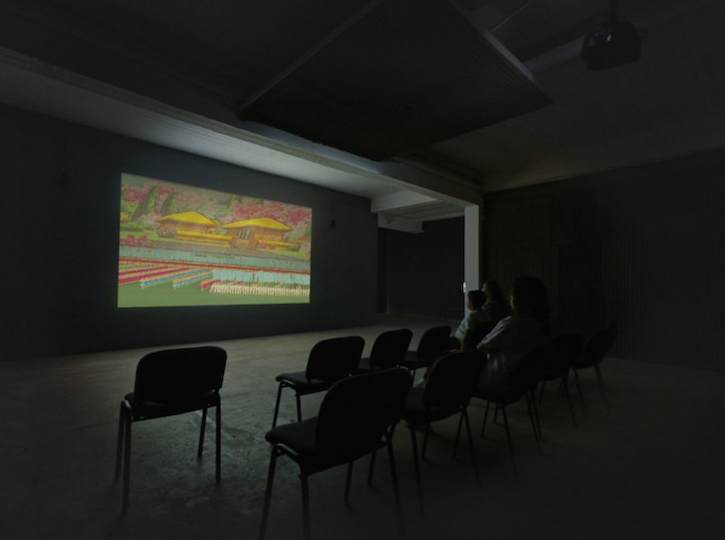The past four years of programming at Beirut Art Center (BAC) has been directed at challenging the idea of “present time”, a title inspired by Virginia Woolf’s 1941 novel Between the Acts, wherein a scene from the book is written to raise awareness about the moment passing. Woolf delivers an astonishing evocation of what remains a recurrent concern in the visual arts: the position of the spectator, and the negotiation and partitioning of roles between those who organize language and symbols into spectacle, and those who attend, engage, and negotiate with it. It is delivered in Woolf’s polyphonic writing and demonstrating at once both the fluidity and the disparities of cinema editing. The novel’s narrative centers around a pageant performed in the English countryside where the village folk re-enact the history of England for the gentry. Following the act presenting the Victorian period, the gentry as spectators are left watching an empty scene where nothing happens. They wait and wonder until one of them reads the program: “The present time. Ourselves.” Woolf suggests that the present is a kind of consciousness, not a spectacle.
It was Chantal Akerman who declared that she wanted her spectators to feel the time passing by during her films. She didn’t want them to forget about time. On the contrary, she wanted them to fully experience it.
This past summer, we exhibited the work of artist Marie Voignier at BAC. Her films engage specific situations where reality is staged. In the three films we showed, life is staged by a power, by a group of people, and by a colonial imaginary. Woolf, Ackerman, and Voignier are all artists dedicated to inventing new languages of time in order to provide the experience of their time. Each excavate a relation to truth that is not a myth (i.e. a story that builds explanations from facts), but rather built out of literal, and often tense, confrontations between the viewer and their experience of present time.
 video installation, Marie Voignier · INTERNATIONAL TOURISM (STAGING REAL LIFE), Beirut Arts Center, 2018
video installation, Marie Voignier · INTERNATIONAL TOURISM (STAGING REAL LIFE), Beirut Arts Center, 2018
In these examples, art acts as an experience of the real. The works activate several “tasks” together: the confrontation of words, images, obvious and non-obvious knowledge, etc. Anyhow, documentary is much more than a record of something. As a narrative device, it includes fiction, conceptual and performative formats, and critical visions and voices. I defend this definition of documentary. The exhibition “Allan Sekula: Photography at Work” in 2017 stressed the ways the artist was writing, photographing, filming, documenting and criticizing, all combined into a singular practice. As a curator invested in critical forms, I am not concerned with the transgression of categories such as cinema and video art. I use the word “film” for all images in motion, and I teach film theory based on this idea. I am interested in distinct film languages wherever I find them. I don’t care if it’s a feature film or an activist recording, as long as it provides a specific language that brings the vision, ideas, and narrative alive without denying the complexity of the piece. I am not interested in films that display a single opinion, nor in any other art that operates as such. I need the counter-shot, the point of view from the other side, to be acknowledged. These are politics of the image and of cultural evolutions.
A significant component of our mission is to encourage young generations of Arabic voices—a necessary endeavor. A place like BAC remains a space for freedom in Beirut, which differs from cinema where everything is officially framed. Therefore our media library, a film and book library for the public, highlights artists from the region. We also have a group show for emerging artists who are Lebanese or living in Beirut every two years.
Beirut Art Center is free to visitors and without state support, so to support this vision we apply to grants and cultural institutes, and we raise money from private collectors or supporters. But we do not apply for funding as an NGO because we don’t want to take money from humanitarian aims. We support the work of NGOs by offering cultural input, but we do it for free.
Title Video Credit: International Tourism, Marie Voignier (2014).

